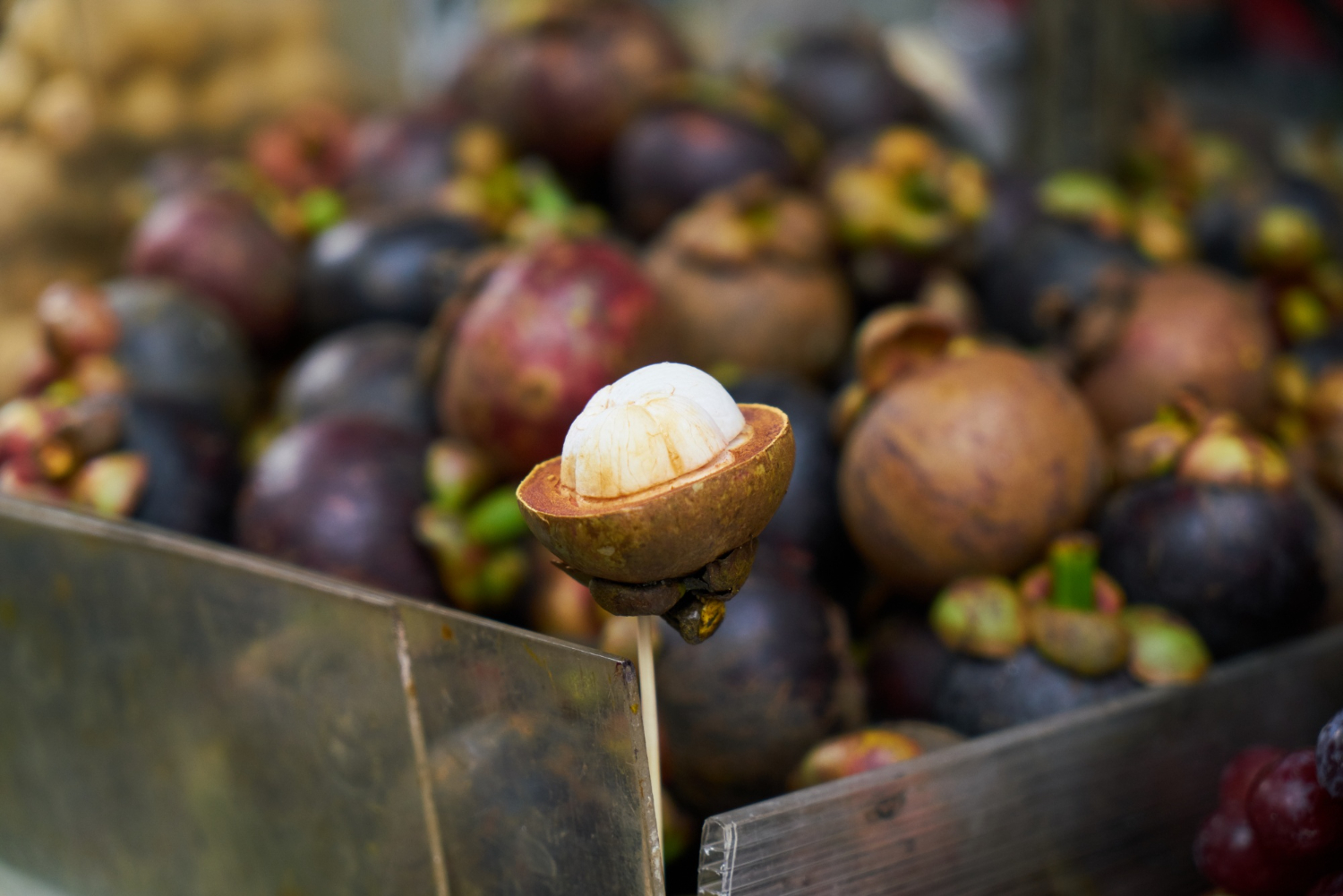Mangosteen processing allows for the preservation and utilization of this remarkable fruit in various culinary creations. Whether enjoyed fresh or processed, mangosteen offers a truly exceptional taste experience

Step
- Select Ripe Mangosteens: Choose ripe mangosteens that have a deep purple color and firm skin. Avoid fruits that are overly soft or have blemishes.
- Wash the Mangosteens: Rinse the mangosteens under cool water to remove any dirt or debris from the skin.
- Score the Skin: Use a sharp knife to make a shallow cut around the middle of the mangosteen, making sure not to cut too deep into the fruit. This allows for easier peeling later on.
- Twist and Remove the Top: Hold the mangosteen firmly and twist the top to remove it. This will expose the white, segmented flesh inside.
- Separate the Segments: Gently pull apart the segments of the mangosteen, starting from the center. The segments should come apart easily.
- Remove the Seeds: Carefully remove the seeds from each mangosteen segment. The seeds are large, dark brown, and not edible.
- Enjoy the Mangosteen: Once the seeds are removed, the juicy and sweet flesh of the mangosteen is ready to eat. You can eat the segments as they are or use them in various culinary preparations.
It’s important to note that mangosteen processing primarily involves peeling and removing the seeds to access the edible flesh. Mangosteen is often enjoyed fresh, but it can also be used in desserts, smoothies, or as a topping for salads and yogurt.
